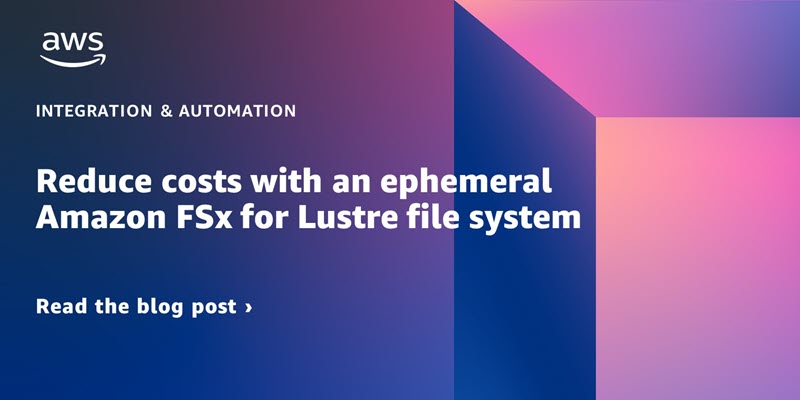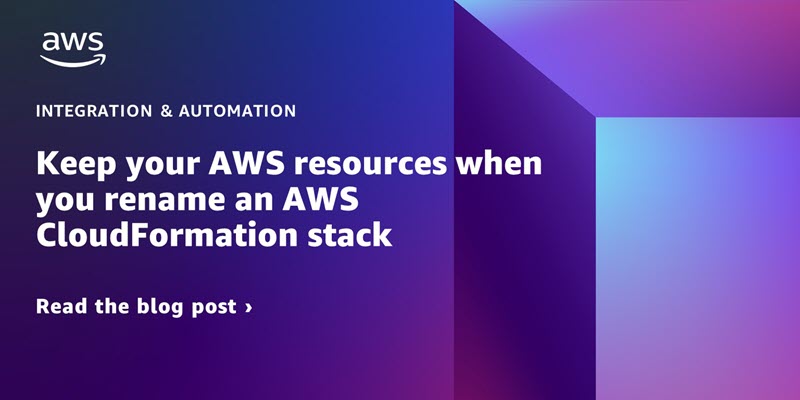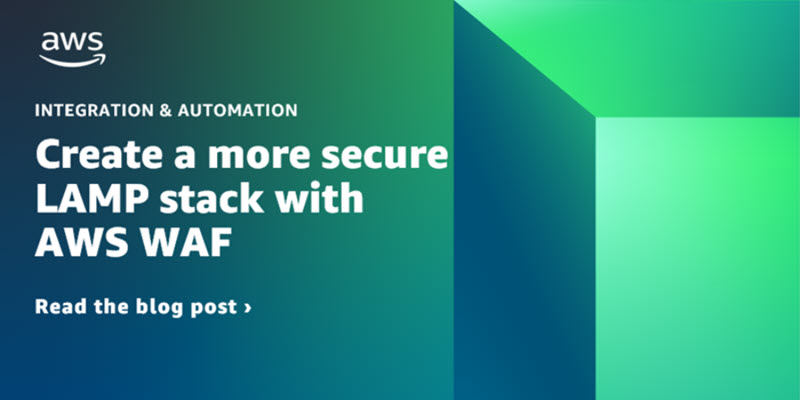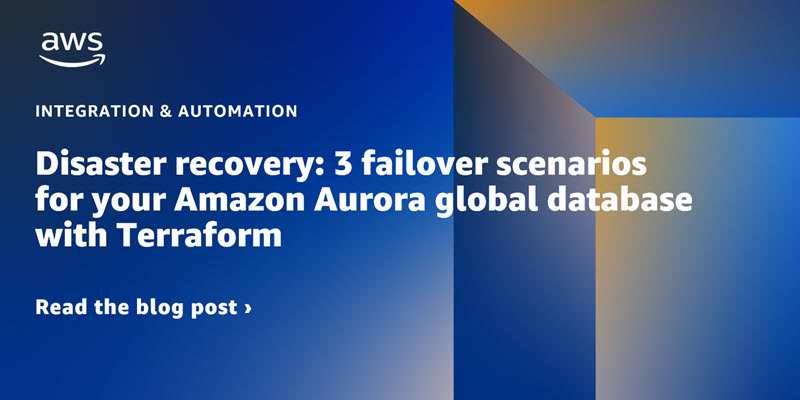Integration & Automation
Category: Technical How-to
Read parameters across AWS Regions with AWS CloudFormation custom resources
Learn to use CloudFormation custom resources in multistack AWS Cloud Development Kit (AWS CDK) applications to read parameters across AWS Regions.
Reduce costs with an ephemeral Amazon FSx for Lustre file system
Create an ephemeral Amazon FSx for Lustre file system that’s active on an as-needed basis, allowing you to pay for services only when the system is used. With the file system running only when needed, you can still benefit from a powerful system with fast processing speeds without the high costs associated with a continuously running implementation.
Reduce security risks from IaC drift in multi-Region AWS deployments with Terraform
Are your infrastructure as code (IaC) Terraform deployments on the Amazon Web Services (AWS) Cloud protected against drift? IaC drift, which can leave your data and resources exposed to security risks, is especially difficult to track down and remove in an environment that spans multiple AWS accounts and AWS Regions. You can do it though, and in this post we show you how.
Keep your AWS resources when you rename an AWS CloudFormation stack
Learn how to change the name of a CloudFormation stack without deleting the resources that it manages. In the walkthrough, which uses a simple architecture with a single resource, a virtual private cloud (VPC), you add a Retain attribute to the resource’s deletion policy so that the resource isn’t lost when that stack is deleted.
Save time and reduce errors by automating AWS Lambda code updates
Learn a simpler, faster method for updating your Lambda code that doesn’t require manual updates to Amazon S3. We provide a fully configured AWS CloudFormation template with Lambda code on AWS CodeCommit.
Create a more secure LAMP stack with AWS WAF (web application firewall)
Learn how to create a more secure LAMP stack with AWS WAF, Route 53 domain, and AWS Certificate Manager. This post walks you through automation steps to deploy a highly available LAMP-stack application with a web application firewall.
Reduce log-storage costs by automating retention settings in Amazon CloudWatch
Learn how to reduce log-storage costs by automating retention settings in Amazon CloudWatch. By default, CloudWatch Logs stores log data indefinitely, which is helpful. But as AWS workload logging grows, so do your log-storage costs. To reduce costs, establish a log-retention policy and apply it across all your log groups, ideally automatically.
Disaster recovery: 3 failover scenarios for your Amazon Aurora global database with Terraform (Part 2)
Simulate recovering an Amazon Aurora global database after a disaster. Walk through three failover scenarios, observe their effect on Terraform state, and learn how to maintain the global database topology and configuration using Terraform.
Prepare for faster disaster recovery: Deploy an Amazon Aurora global database with Terraform (Part 1)
Learn how to automate the deployment and management of an Amazon Aurora global database—across multiple AWS Regions—with Terraform. This architecture can provide disaster recovery from Region-wide outages with low recovery time objective (RTO) and recovery point objective (RPO).
Emulate your test environment using a service virtualization on AWS
Learn how to create a service virtualization using AWS CloudFormation and Amazon API Gateway to test an application that uses an external API that’s not always available.









